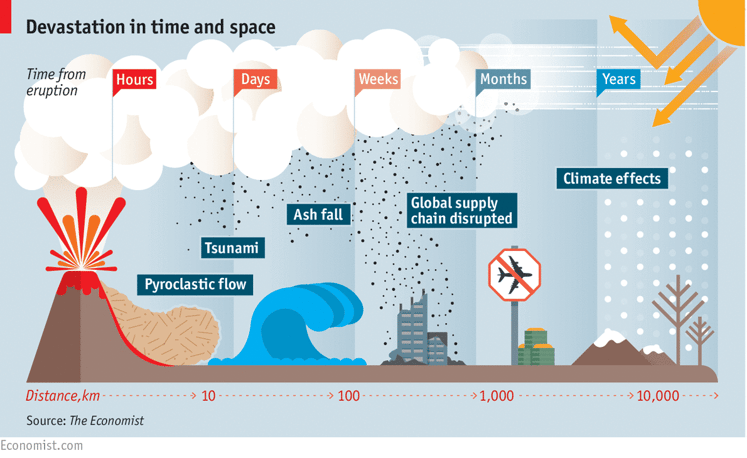The Year Without a Summer
by Daphne Thompson, on Jul 21, 2016 12:04:40 PM
Have you ever heard of the year without a summer? No, I'm not talking about anything recent when you felt chilly on a day in June. The year was 1816, Russia still had a tzar, Napoleon was in exile, and Indiana became the 19th state.
Let's step back a bit to see how 1816 became known as "The Year Without a Summer". On April 10, 1815, Mount Tambora violently erupted. This Indonesian volcano blew its top off, losing 4,000 ft of its height. It is still considered the most powerful eruption in recorded history.

When a volcano erupts, the pyroclastic flow, rock debris, and tsunamis can kill thousands nearby. The ash and gas ejected into the atmosphere can have devastating affects worldwide. When Tambora erupted, East Asia was plunged into darkness for a week by the amount of ash in the air. As the ash spread out over the globe, it reflected the sunlight so that not as much got to the ground. This effect can last for a few days. It is the sulfur dioxide that causes the bigger problems. The aerosols reach high into the atmosphere and block solar radiation for months, which can cause issues for several years. The 1815 eruption caused a Volcanic Winter where global temperatures dropped.

In the spring months of 1816, farmers began to plant their crops, but by summer temperatures had dropped. The results of Mount Tambora's eruption were now being felt in the Northern Hemisphere. No one knew why this was occurring, as news didn't travel like it does today. All they knew was that their crops were dying. Food shortages were reported in Ireland, France, England, and North America. Snowfall was reported in the Northeast U.S. in June. You can see some of the stories below mention crop failures due to the unusually cold weather.

There were some interesting events that came out of the "Year Without a Summer". Paintings from that period of time show remarkably colored sunsets, which would be due to the ash in the air. In Switzerland, a group of writers got together to challenge each other to write horror stories inspired by the weather. Mary Shelley's Frankenstein was born from this. In America, the westward migration increased as farmers in the East left after losing their crops.
It is reported that over 70,000 people died from the eruption of Tambora, the majority were killed by disease and starvation. While we can't stop a volcano from erupting or alter the weather, we can help protect farmers by providing better weather data. For instance, long term forecasts can give planters an idea as to whether it will be warmer or colder than normal, as well as wetter or dryer. Should a Volcanic Winter ever set in again, the world of agriculture will be prepared.








